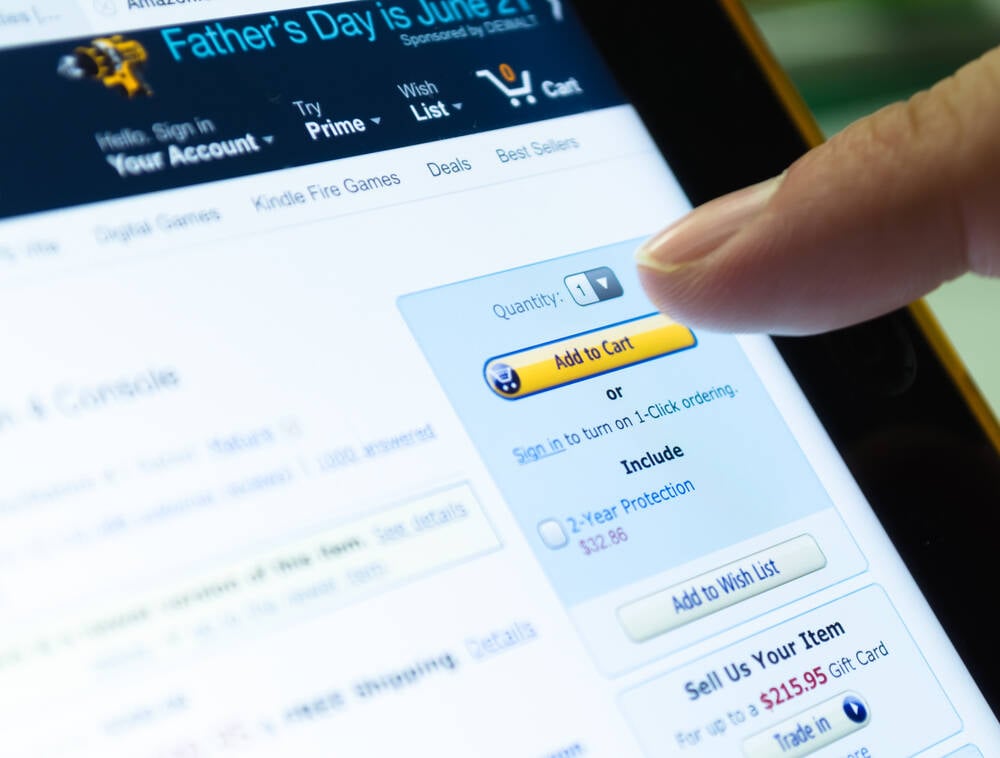Unrelated to this claim, but I’ve also noticed really rapid price adjustments of a few cents on products.
It seems like Amazon raises prices frequently based on what’s in carts and how many page clicks it gets.
A $6 item changed from $5.95 to $6.05 to $5.98 in a span of an hour.
Put some items in your cart. Move them to Save for later. Almost every time you go back to your cart you’ll have a notification saying that prices have changed. Happens more on some days than others. Not just Amazon provided items either. Other sellers have bots that automatically adjust the prices using who knows what guidelines.
Exactly, that’s what I did. Removed it from my cart and waited an hour and suddenly it was a little cheaper.
I have no doubt there are bots monitoring to get every cent out of each transaction, knowing that people probably won’t care about small changes.
I have no doubt there are bots monitoring to get every cent out of each transaction
These bots occasionally get stuck in a loop which results in hilariously absurd pricing: https://youtube.com/watch?v=sseSi0k3Ecg
On the other hand, I recently got 5 cents and 17 cents back for things I bought some time ago and was wrongly priced, apparently.
There is a new promotion type used by sellers that allow us to target people who have abandoned cart. We can offer exclusive discounts to those people.
Well also remember that to win the “buy box” is also a competition amongst people who are just drop shipping similar items, sometimes by the pallet load, directly to Amazon warehouses and then based on margin basically doing a constant reverse auction to win the box the customer sees. Amazon also knows all this and will adjust its own competing stock/listings according to these changes as well. I have also heard that their prices are similar to Walmart and will vary based on estimated income of the customer. Have an iPhone or Mac and you are probably paying more than someone that shops on a cheap Android phone or no name PC.
Prices do not vary based on estimated income. Pricing control is not that granular.
This isn’t based on income, but here is the automatic price adjusting.
EDIT So, not 100% as granular, but not that far off.
Another interesting aspect of dynamic pricing is that it can lead to price discrimination, where different customers are charged different prices for the same product. This is because retailers can use customer data, such as location, browsing history, and purchase behavior, to tailor prices to individual customers.
I am very well aware of the automated pricing tools in Amazon. The accounts under my management will do over $3.5 million in sales this month. I will also manage almost $1 million in ad spend. I may be the only person in this comment section with a qualified opinion.
These tools cannot adjust price based on customer data. They can adjust pricing based on competitor prices, and based on how many units you are currently selling. That is all.
Majority of products are not sold by Amazon. Some sellers use price automation software, some use built-in functionality provided by Amazon. Amazons built in functionality allows sellers to set competitive prices relative to other sellers on Amazon.
It has nothing to do with page views, clicks, or cart adds. Sellers cannot see cart adds in real time.
Yeah, thats so obnoxious.
claim the internet titan artificially inflates prices
All prices are artificial.
No the claim is that the inflation is artificial… not the prices.
They both always are. Companies make up the prices, and price increases. Predicting how much folks are willing to pay.
Well no, artificial in the sense that it’s arbitrary, as opposed to price increases tied to something more tangible, like cost.
Its a common misconception, prices are never based on cost, its what people are willing to pay. Now, what people are willing to pay can be influenced by perceived costs, but thats pretty artificial too. The prices at a restaurant for example vary pretty wildly in profit margins. Pretty famously, sodas cost cents to make, but people are willing to pay orders of magnitude more.
Prices are 100% influenced by cost. That soda may be $3.00 even when the syrup is $.30, but if the cost of syrup went up to $2.00, the price of soda at the restaurant would go up. It would do so not because they arbitrarily decided it, but due to the cost of the syrup eating into their margins. This concept is the reason behind the revolution that is modern logistics and the global economy.
Not “cost plus” pricing.
So is most of the junk they sell on Amazon. I’ve gotten so many fake and poor quality products in the last couple of years that I shop anywhere else I can first.
deleted by creator
“New”?
I’m a DQ fan but I don’t get this reference. I’ve played 1-4, 9 and 11.
deleted by creator
That makes sense!
Canceled my prime a few years ago. You don’t need that bullshit in your life, people.
I just can’t get over this terribly forced alliteration
Bazaar of Bezos buries bargains, allegedly
Oh come on we were so close to all be words that start with “b”… The of could be replaced with a by,… But the allegedly, I have troubles with it.
Bazaar by Bezos buries bargains, ¿belivedly?
This is the best summary I could come up with:
Amazon has been sued by two customers in the United States who claim the internet titan artificially inflates prices, hitting shoppers in the wallet.
Each product listed on the gigantic e-souk usually has a so-called Buy Box on the right-hand side of the page encouraging folks to put items straight into their virtual carts.
For those who don’t know: Sellers in the FBA can, among other perks, use Amazon’s sprawling warehouse and delivery network to offer free two-day shipping of items to Prime subscribers, making those vendors attractive to shoppers.
The proposed class-action fight was brought by two California netizens, Jeffrey Taylor and Robert Selway, who claim Amazon broke its home state of Washington’s Consumer Protection Act, which prohibits “unfair methods of competition and unfair or deceptive acts or practices in the conduct of any trade or commerce.”
They requested a jury trial and damages, and asked other Amazon customers who have made any purchases using the Buy Box from 2016 onward to join the cause.
Over in the UK, consumer-rights activist Julie Hunter took Amazon to a Competition Appeal Tribunal in a £900 million ($1 billion) lawsuit.
The original article contains 604 words, the summary contains 188 words. Saved 69%. I’m a bot and I’m open source!
The ability to win the buy box is exceptionally predictable.
It is based on a combination of factors. The price point, fulfillment method, shipping cost, and feedback provided by customers about each individual seller.
If I am the brand owner, using Fulfillment by Amazon, have the lowest price, and good seller feedback, I will win.
If you come on the listing a lower price, no shipping cost, and equivalent feedback, but you are shipping the item yourself and have a slightly lower feedback rating, you will not win the buy box.
The system is not rigged against the customer. Amazon is attempting to improve the customer experience, with price just being part of it
The paperwork gives as an example a $55 toy that is sold by an FBA member that is featured in the Buy Box while a non-FBA vendor that offers the same item for $51 is placed in an alternative sellers box lower down.
Not mentioned: the FBA product almost always qualifies for free shipping in orders over $35, or free Prime shipping, while the non-FBA product almost always has an additional shipping cost. This means that the one in the buy box is usually the cheapest when you account for shipping (and also means shipping is faster, and combined into one box where possible).
If that’s the logic they use (and from an end-user perspective, it appears to be) then I’m totally fine with it.









